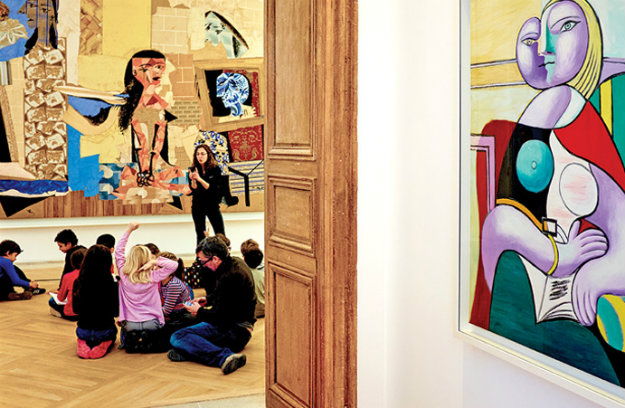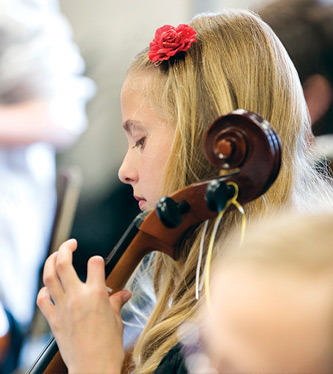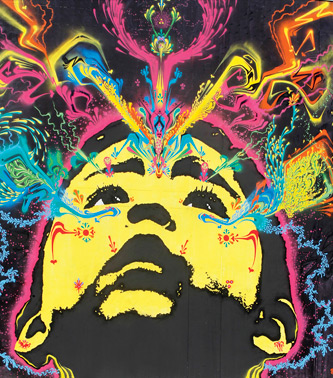Arts Education in Public Schools

Policy choices rather than money are the real cause of the loss of arts education in many schools, says Bethlehem Area School District Superintendent Joseph Roy.
Joseph J. Roy
Superintendent of Schools,
Bethlehem Area School District
Dean's Advisory Council,
College of Education
When school success is measured by standardized test scores and inequitable state funding leaves poor districts desperate for dollars, arts education is often a victim of the budget ax. While few dispute the positive effects of arts education—from creative thinking to problem solving to greater empathy for others to improved school climate—legislative mandates and financial shortcomings reveal a lack of true commitment to arts education at the state policy level. On the other hand, the Bethlehem Area School District's commitment to educating the whole child values arts education as much as those academic disciplines subject to state standardized testing. The district's "Roadmap to Educational Excellence," based on the International Center for Leadership in Education's four learning criteria (core learning, stretch learning, student engagement and personal skill development), provides the rationale for protecting arts education even in difficult budget times.
While our district made painful budget cuts several years ago, losing key student supports around tutoring and extended school day remediation, we continued to protect and support arts education as a key part of a child's education. In fact, for many students coming from impoverished backgrounds, the arts provide creative opportunities that engage the students in school, helping them to find greater success in core academic subjects.
In the end, misplaced state accountability measures, inequitable state funding and unfunded state mandates often leave arts education on the outside looking in. Policy choices rather than money are the real cause of the loss of arts education in many schools.
Jon Drescher
Professor of Practice, Center for Developing Urban Educational Leaders Director, Urban Principals Academy @ Lehigh (U*PAL)
Marcel Proust said, "Only through art can we get outside of ourselves and know another's view of the universe."
Maxine Greene has written, "I want to urge you to go back in your own life narratives and try to recover those moments when imagination, released through certain encounters with the arts, opened worlds for you, disclosed new vistas, helped you look at things as if they could be otherwise.
Elliot Eisner compiled a list of 10 Lessons the Arts Teach:
- The arts teach children to make good judgments about qualitative relationships.
- The arts teach children that problems can have more than one solution.
- The arts celebrate multiple perspectives.
- The arts teach children that in complex forms of problem solving, purposes are seldom fixed, but change with circumstance and opportunity.
- The arts make vivid the fact that neither words in their literal form nor numbers exhaust what we can know.
- The arts teach students to think through and within a material.
- The arts teach students that small differences can have large effects.
- The arts help children learn to say what cannot be said.
- The arts enable us to have experience we can have from no other source.
- The arts' position in the school curriculum symbolizes to the young what adults think is important.
I would argue that these same lessons have equally powerful messages for adults as well.
So, with just the three examples above, which are just the tip of the iceberg when it comes to the importance of the arts, why are the arts either minimized or the first to go when there are fiscal issues in play in so many of our nation's schools? Aren't the best schools you've ever visited places that seem to come alive when the adults and children have an opportunity to teach with and express themselves through the arts?
J. Andrew Cassano
Administrative Director
Zoellner Arts Center
Cuts to the arts in education are nothing new but they are always a mistake, affecting generations of students. The rising interest in the STEM (Science, Technology, Engineering and Mathematics) disciplines is built to provide global businesses and economies with students trained for promising careers waiting after graduation. But increasingly, major think tanks and foundations are coming out with more proof that eliminating the arts from well-rounded education greatly reduces the chance of preparing our young people for careers in any field, to communicate as global citizens, and to ask questions of why they are doing what they're practicing. Even proponents of STEM argue that the arts, in some degree, are necessary in approaches to creativity and failure, expression and communication, as well as applied design. But beyond practical application, the arts are one of the single highest success stories in engaging youth in poverty and inspiring them to be successful, stay in school and graduate. The arts and humanities have always been hard to codify through testing as subjects. However, what is increasingly well documented is that schools that have more access to the arts have higher graduation rates. The options for schools to provide access to the arts for students have also grown in recent decades, as arts organizations across the country have increased their efforts to provide programs to schools in an effort to fill the void.
Posted on:



